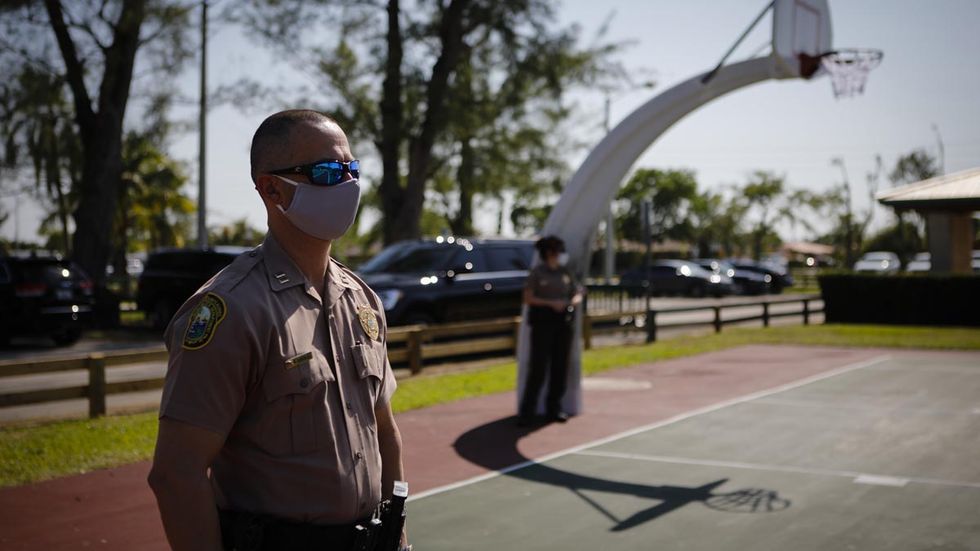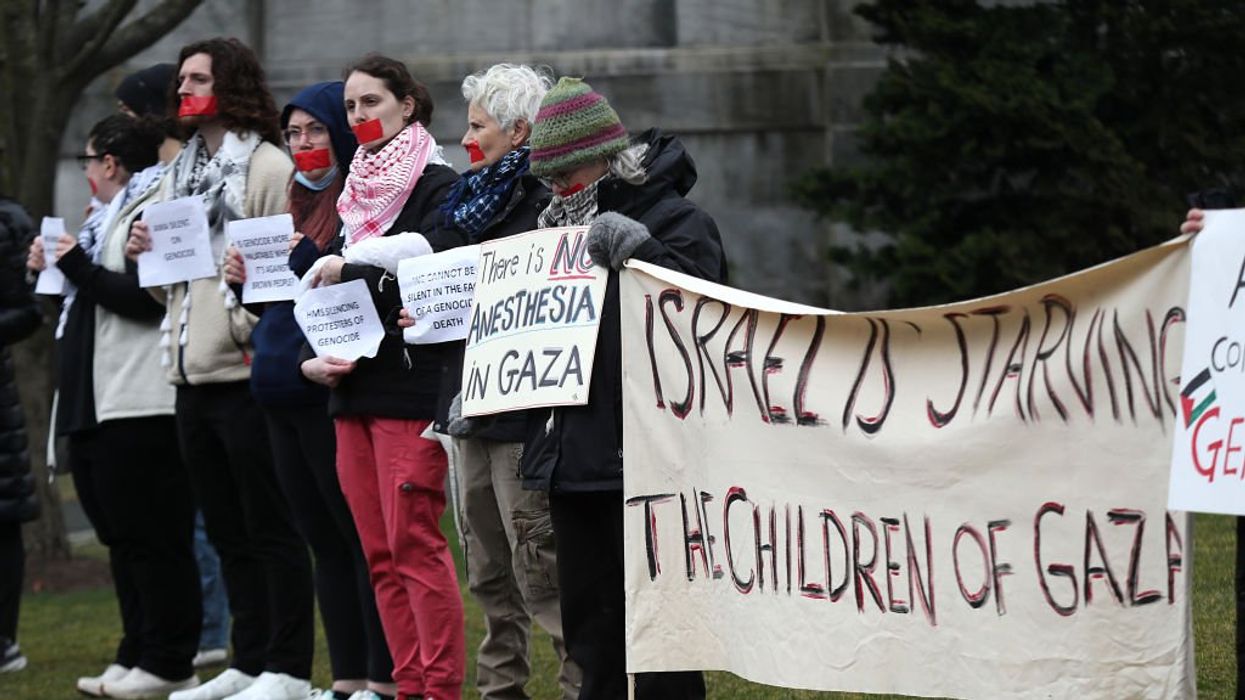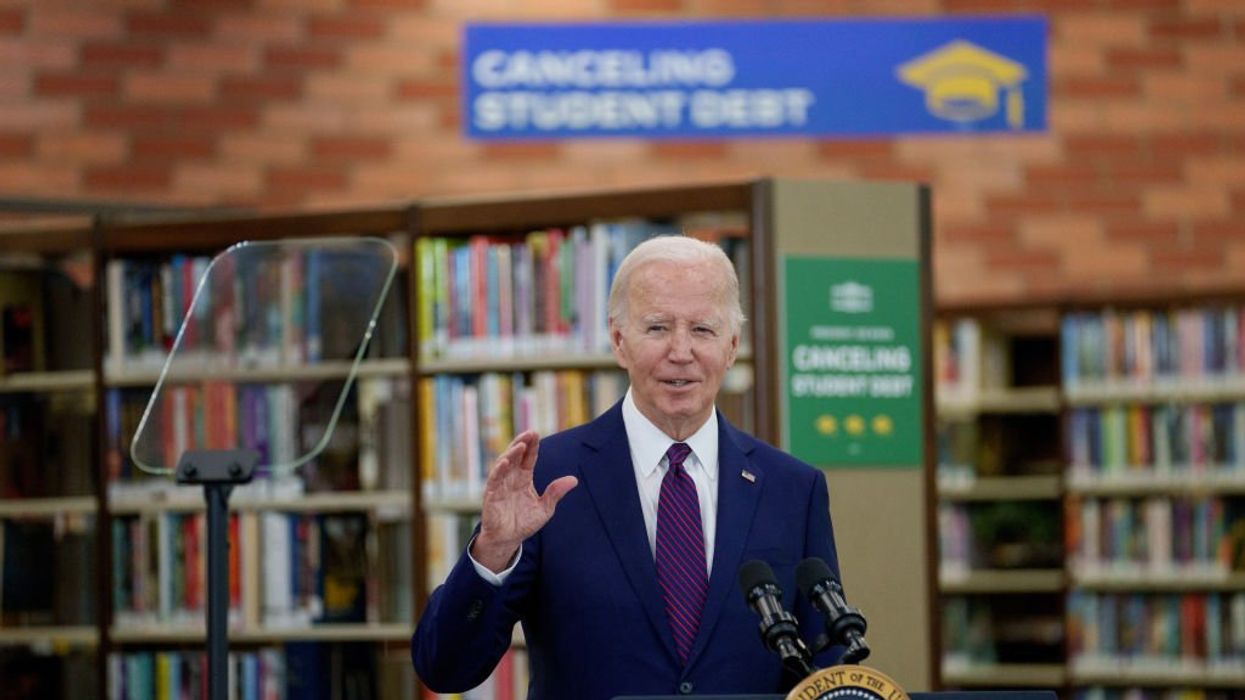
© 2024 Blaze Media LLC. All rights reserved.
Horowitz: The young and the healthy are not dying from COVID-19. Here's why that's vitally important
May 01, 2020
Why is our approach to the virus the same for all people, when the virus itself is so overwhelmingly biased toward a defined group of people?
Understanding that this virus only kills the elderly and sick in statistically significant numbers does not diminish their lives or even the seriousness of the virus. This understanding magnifies the need for a strategy that lets out healthier and younger people keeping the country running while shielding the vulnerable population until the virus burns out.
According to Minnesota’s health department, 99.24% of all statewide COVID-19 deaths have occurred either in long-term care facilities, such as nursing homes, or among people with significant underlying health conditions, with the overwhelming majority (78%) of decedents in the former category. That would mean just three individuals who died of COVID-19 in Minnesota were outside a nursing home and had no underlying condition. That is a 0.05% fatality rate just out of the known cases, and we’ve seen from serology tests that the true number of cases is exponentially greater than the number who tested positive. This fact should change our entire approach to the virus.
While the numbers are not quite that stark in more densely populated states with more widespread outbreaks, we are witnessing the same pattern to varying degrees in most other states and most other countries. Over half the SARS-CoV-2 deaths in Massachusetts, Maryland, and Maine were in long-term care facilities, and the median age of death in most states was 82. That number is 75% in Rhode Island, 61% in Pennsylvania, 58% in Delaware, 57% in Oregon, and 56% in Colorado. Even in a more widespread outbreak state like Connecticut, nursing homes account for nearly half the deaths, and those over 70 account for 80 percent of the deaths.
Understanding the importance of this data point will give us a better sense of why locking down an entire society is unnecessary (and even counterproductive) and why a balanced strategy of “stratify and shield” would be much better, on all fronts, than lockdown.
The data is in and the facts are clear: We were lied to
We were lied to. At the onset of the global panic in early March, the World Health Organization said the virus had a 3.4% fatality rate. Then, the same powers that be scared the world by saying a new version of the virus was killing 10% in parts of Italy. Eventually, they did the same thing with New York City and warned us that the rest of the country would be like NYC.
In reality, they ignored the fact that this virus had already spread for several months and infected exponentially more people than the official testing showed, that most people were asymptomatic or mildly symptomatic, and that therefore, for most people, the fatality rate is a tiny fraction of the panic porn numbers – more in line with 0.1-0.3% or perhaps, as we will see, much less for some.
A fatality rate of 0.1%-0.3% is still very serious when factoring in the rate of contagion, the fact that it goes on well past the winter and early spring, and that, unlike the flu, there is no vaccine. However, it is nowhere near the numbers they are suggesting, and even in the New York City metro, which has for some reason been hit worse than any other region (more than half of deaths are from the tri-state region), the fatality rate is still well under 1% because at least 25% of NYC residents got the virus.
Breaking down the age and health status brackets — and why it matters
So now that we know SARS-CoV-2 is much less fatal than it has been advertised in order to justify lockdown policies, and all its human and financial tolls, there is no reason for a universal lockdown. The critical question, then, is what are the fatality rates by age, geography, demographics, and gender so that everyone is aware of their likely risk and can take precautions accordingly.
The truth is that the macro fatality rates we are seeing are very lopsided. Every virus has its quirks and particularities, and this one seems to have almost a linear increase with age. Kids have almost no risk whatsoever, which is why it makes no sense to close the schools. Younger adults have a very low risk. We also know that men seem to have a higher death rate than women and that black people seem to have a higher death rate than white people, while Asians have the lowest death rate. Genetics, unfortunately, plays a role, as well as some lifestyle and environmental/geographical factors.
But by far, the single biggest factors are age and health status. While the virus seems to be less deadly than the flu among small kids, slightly more deadly among younger, healthier adults, and significantly more deadly (but again, a fraction of what they claimed) among seniors, nursing homes and sick people are really in danger. Shouldn’t all our resources, regulations, and attention be directed toward shielding them while having as many others as possible achieve herd immunity, so this doesn’t keep coming back to threaten the vulnerable population?
Most serology studies in America (outside New York City) show a fatality rate of between 0.1% and 0.3% among all adults. That number is corroborated by hard data we are seeing in defined and confined populations, such as ships and prisons. Again, that is very low compared to what the media is telling us, but it might be much lower for other populations. First, all of the domestic serology tests excluded kids under 18. Their fatality rate is likely a fraction of that fraction. Second, what would happen if you removed those over 70 from the sample or even those over 60, and what if you removed those with chronic conditions from all age groups, but especially among seniors?
We don’t have a domestic sample yet that excludes seniors, but one study from Denmark could perhaps give us a partial answer. A large group of Danish epidemiologists published the results of a serology test from 9,496 blood donors who were tested for the antibodies in order to donate plasma to those sick with the virus, as we have begun to do in America. The sample was taken between April 6 and April 17 and only included donors aged 17-69. Thus, most kids were excluded but also anyone 70 or over. They used this random sample to discover the infection rate and extrapolate the number of total COVID-19 cases in Denmark, then compared it against the number of deaths for that age group. The result? An infection fatality rate of 82 per 100,000, or 0.082. That is less than 0.1%, and it even includes people in their 60s.
Obviously, this is just one survey, and genetics and demographics in America (which include more higher-risk black and Latino people) could result in a higher fatality rate, but this is very revealing. It also easily harmonizes with hard data we are seeing from states like Minnesota, where close to 80% of all deaths are in nursing homes, and that number rises to 99.24% when factoring in those with underlying health conditions as well. Putting these numbers together, it would make sense to suggest that kids have near zero risk and that adults 18-70 (especially under 55 or 60) might have a fatality rate significantly lower than 0.082% across many demographics and localities.
But it could be even lower.
As the Danish researchers wrote, “The death toll among all citizens below 70 years was used even though only 16 of 53 deaths appeared among individuals with no comorbidity. This was chosen because the denominator included all citizens in the age strata, thus, also individuals with comorbidity. The IFR including only individuals with not comorbidity is thus likely several fold lower than the current estimate.” (Emphasis added.)
Thus, for those who are of prime working age and also have no serious health conditions, the fatality rate is “several fold” below 0.082%. As such, it’s simply indefensible not to put them back to work and certainly send kids with an even lower risk back to school.
This point is punctuated even more by a similar study of blood donors from researchers in the Netherlands, whose serology testing data results a Dutch blogger actually broke down and extrapolated for fatality rates by age group.
As you can see, the 0.1% rate, which is often the benchmark given for the flu fatality rate, is not even attained until you get to the 50-59 age group. It’s significantly less for younger cohorts and still under a half a percent for those in their 60s. Of course, it’s nonexistent for kids. And again, all these age groups factor in those with underlying conditions as well as those who are healthy. We do not have a study of the fatality rate for people under 60 with no underlying health concerns.
Yes, this is one sample and from another country (with a much lower obesity rate than the U.S.), but it sheds light on the age breakdown of some of our top-line numbers from domestic studies and harmonizes with data in most states where the overwhelming majority, if not nearly all individuals, who died outside nursing homes had underlying health issues.
One doctor used the serology studies in L.A. and Santa Clara counties, which showed an overall fatality rate of 0.2%, and broke them down by age group based on confirmed tests and found similarly infinitesimal IFRs among younger strata as the numbers from the Netherlands.
Obviously, for reasons still being debated, the New York City area numbers are higher across the board, but nearly all of our country is seeing an experience closer to that of California and Minnesota, not New York. And even in New York, one comprehensive study found that 94% of fatalities in the area had at least one chronic illness and 88% percent had at least two.
Why are our governments not following the science and publishing the data?
This is undoubtedly a bad plague. But unlike in 1918, it attacks younger and healthier people in remarkably low numbers. There are certainly a lot of people at high risk, but the difference between shutting down everyone and shielding the vulnerable is the difference between a recession and an economic Hiroshima, a functioning health care system and a furloughed health system, a food crisis and a “mere” cut in jobs, wages, and 401Ks.
The Spanish flu was the most devastating pandemic of the 20th century because not only was it highly contagious, but it primarily attacked younger, healthier people between the ages of 20 and 40 with a fatality rate at least 20 times higher than the flu. Fast-forward to SARS-CoV-2, and our government and media are acting and governing as if this is the Spanish flu when, in fact, the effects of it, while very dangerous and for the most part more so than the typical flu, are nowhere near what they were in 1918. This is where understanding demographic fatality rates and a more targeted strategy of quarantine, as well as balancing rate of spread against achieving herd immunity with the lowest-risk population, is so much more achievable than it was in 1918.
It is simply indefensible that our government, which is sitting on more data than any other country, has not put out any information showing the fatality rates by demographics. While there is a lot about this coronavirus we still do not know, it is incontrovertibly clear that there is a lopsided danger for 15%-20% of the most vulnerable population and most pronounced in nursing homes. It makes no sense to use meaningless top-line numbers lumping in the whole population, including those least at risk, to shut down our society and kill more people with the lockdown itself.
The best way to balance all lives and the economy and mental health while protecting the vulnerable is to have the low-risk groups go out with proper precautions and allocate almost all of our resources on nursing homes. That is the scientific approach. That is the only compassionate strategy for the country at large.
On Wednesday, when Minnesota Department of Health Infectious Disease Director Kristen Ehresmann revealed that 99.24% of those who died were either in long-term care facilities or had serious underlying illness, KSTP reporter Tom Hauser followed up with the trillion-dollar question (59:36 of the audio). “So when Minnesotans look at that and they try to assess their own risk of having the worst possible outcome from COVID-19, which of course would be death, they will look at that and say, if I’m not in one of those two categories, why is this state shut down economically the way it is? How would you respond to them?”
The question remains unanswered.
Want to leave a tip?
We answer to you. Help keep our content free of advertisers and big tech censorship by leaving a tip today.
Want to join the conversation?
Already a subscriber?
Blaze Podcast Host
Daniel Horowitz is the host of “Conservative Review with Daniel Horowitz” and a senior editor for Blaze News.
RMConservative
more stories
Sign up for the Blaze newsletter
By signing up, you agree to our Privacy Policy and Terms of Use, and agree to receive content that may sometimes include advertisements. You may opt out at any time.
© 2024 Blaze Media LLC. All rights reserved.
Get the stories that matter most delivered directly to your inbox.
By signing up, you agree to our Privacy Policy and Terms of Use, and agree to receive content that may sometimes include advertisements. You may opt out at any time.



